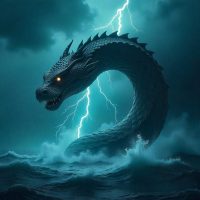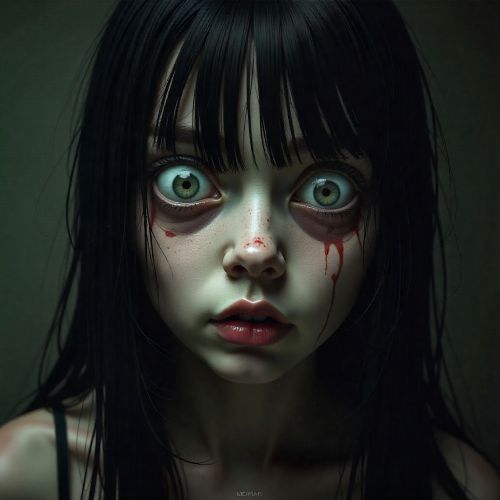Maboyo : The Kalinago Spirit of Chaos and Protection
Listen
At a glance
| Description | |
|---|---|
| Origin | Kalinago Mythology |
| Classification | Spirits |
| Family Members | N/A |
| Region | Dominica |
| Associated With | Chaos, Storms, Illness |
Maboyo
Introduction
In the indigenous cosmology of the Kalinago people of the Caribbean, few spirits command as much awe and caution as Maboyo, a supernatural being whose presence shaped ritual life, communal behaviour, and the worldview of the Island Caribs. Known both as a destructive force and a spirit requiring constant negotiation, Maboyo sits at the centre of one of the most intricate spiritual systems in the region. Within Kalinago belief, the natural world was alive with unseen powers—some nurturing, others dangerous—and Maboyo embodied the volatile forces that could unleash storms, illness, and disorder if ignored. Yet at the same time, Maboyo was not merely a demonised figure; through ritual appeasement and shamanic mediation, the Kalinago found ways to maintain balance, protect their people, and assert harmony within their environment. Understanding Maboyo provides rare insight into the deeper spiritual fabric of the Caribbean before colonial disruption.
Physical Traits
The physical representation of Maboyo was never fixed, which is typical of Kalinago spiritual entities rooted in oral tradition rather than rigid iconography. He was often imagined as a colossal sky serpent, a form that symbolised the destructive potential of hurricanes, violent winds, and seasonal storms that shaped life in the Caribbean. This serpentine essence linked him simultaneously to the sky and sea, the two realms most associated with unpredictable natural power.
Storytellers also described Maboyo as a shifting, elusive presence capable of appearing as monstrous animals, shadowy humanoid shapes, or terrifying apparitions seen at night. Carved wooden idols and zemis occasionally captured his essence in grotesque forms meant to repel his influence rather than attract it. These sculptures were not portraits but spiritual conduits, reminders of a force that was felt more than seen. Maboyo’s fluid, fearsome appearance reflects his nature—an embodiment of danger, instability, and the unseen energies governing the world.
Family
In Kalinago cosmology, Maboyo did not belong to a divine lineage or ancestral chain. Unlike benevolent spirits associated with agricultural fertility, healing, or community protection, Maboyo was considered part of a broader category of malevolent forces. These entities existed outside the kinship-based spiritual structures that defined other sacred beings, marking Maboyo as a cosmic outsider.
Rather than being a member of a mythic family, Maboyo belonged to a conceptual realm populated by destructive spirits responsible for storms, plagues, and social disruption. His “family,” then, was metaphorical—other spirits operating on the darker edges of Kalinago belief. This separation emphasised his unique position: a solitary force that demanded respect and ritual attention not through affection or lineage, but through appeasement and caution. His lack of kinship also reinforced the idea that Maboyo represented the unpredictable forces of nature rather than a personalised or emotionally driven deity.
Other names
Across the Caribbean, the spirit known as Maboyo appeared in various forms and under related names. In some Taíno and Siboney traditions, similar destructive forces were collectively referred to as Maboyas, suggesting that the term could signify both the spirit itself and the idols associated with him. In certain regions, “Maboya” functioned as a plural noun describing protective charms or carved figures used to ward off spiritual harm.
This dual usage illustrates the fluidity of indigenous Caribbean linguistic and spiritual practice: one name could describe a feared supernatural entity as well as the ritual objects created to appease or repel it. The name also carried connotations of nocturnal danger, seduction, and crop destruction in some Taíno narratives, revealing how interconnected the region’s mythologies were. Although the specific attributes varied, all iterations pointed back to a shared understanding of Maboyo as a powerful spirit whose influence needed to be managed rather than ignored.
Powers and Abilities
Maboyo’s abilities reflected the forces that most shaped Kalinago life—nature, illness, and social cohesion. He was believed to hold sway over violent weather patterns, particularly the sudden storms and hurricanes that devastated islands without warning. His influence extended to disease, misfortune, and personal afflictions, often interpreted as signs that Maboyo had been angered or neglected.
In several traditions, Maboyo also disrupted households by seducing women or sowing discord, a narrative that may reflect deeper cultural concerns about balance and order. Ritual practitioners known as boyez, or shamans, served as intermediaries, using chants, smoke, talismans, and zemis to ward off Maboyo’s presence. Offerings of food, tobacco, and carved objects were essential to maintain spiritual equilibrium. While Maboyo’s powers were primarily destructive, they also reinforced the importance of ritual discipline, community unity, and respect for the unseen world. His role made him central to the spiritual governance of Kalinago society.
Modern Day Influence
Although Christianity and colonial cultural shifts dramatically altered Kalinago spiritual life, the memory of Maboyo endures in the Caribbean imagination. Among the modern Kalinago community in Dominica, Maboyo persists as a symbol of danger, chaos, and the unpredictable forces that shape both nature and human experience. In literature, folklore, and academic studies, Maboyo often appears as a metaphor for historical trauma, natural disaster, or internal conflict.
Some cultural revival movements have reinterpreted Maboyo not solely as a malevolent being but as a representation of balance—acknowledging that destructive forces are intrinsic to natural cycles. His association with serpents connects him to international mythic archetypes such as Apep of Egypt or the Greek Python, demonstrating the universality of chaos-serpent symbolism. Contemporary Kalinago artists, storytellers, and heritage educators continue to reference Maboyo, preserving his significance as an emblem of indigenous identity, resilience, and cosmological complexity.
Related Images
Source
Dompédia. (2024). Maboya. Retrieved November 22, 2025, from https://www.dom767.com/dompedia/maboya/
Manchester High School. (2023). Kalinagos (Caribs) cultural insights and societal structure. Retrieved November 22, 2025, from https://www.studocu.com/row/document/manchester-high-school/caribbean-history/the-kalinagos-notes/78871816
St. Georges Institute. (2022). The Kalinago | SGI MyCORE. Retrieved November 22, 2025, from https://stgeorgesinstitute.org/mycore/courses/his-301/lessons/csec-revision-3-17-01-22-theme-one-indigenous-people-and-europeans
Ancient Antilles. (2018). Belief, Ritual, Art. Retrieved November 22, 2025, from https://ancientantilles.wordpress.com/page/
Taylor, D. (2010). Spirit and Power: Indigenous Caribbean Cosmologies. Kingston: University of the West Indies Press.
Allaire, L. (1997). The Archaeology of the Caribbean. Cambridge: Cambridge University Press.
Davis, D. (2000). Caribbean Mythology and Folklore. New York: Routledge.
Lennox, R. (2015). Indigenous Religions of the Caribbean. Oxford: Oxford University Press.
Honychurch, L. (2019). The Kalinago People: A Study of Culture and Survival. Dominica: Papillote Press.
Frequently Asked Questions
Who is Maboyo in Caribbean mythology?
Maboyo is a powerful spirit in Kalinago belief, associated with storms, illness, and destructive natural forces.
Is Maboyo considered evil?
He is seen as dangerous and chaotic, but not inherently evil—his powers reflect natural forces that must be respected and appeased.
What does Maboyo look like?
Maboyo is often envisioned as a massive sky serpent or shifting supernatural figure embodying storms and disaster.
How did the Kalinago appease Maboyo?
They used rituals, chants, offerings, and carved idols mediated through shamans known as boyez.
Does Maboyo influence modern Caribbean culture?
Yes, he remains a powerful symbol in folklore, cultural revival movements, and academic discussions of indigenous Caribbean spirituality.





